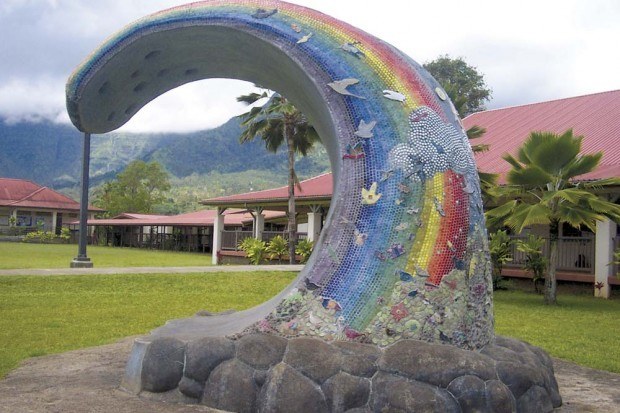LIHU‘E — The state Department of Education on Friday announced two more Kaua‘i schools have met federal Adequate Yearly Progress standards, a measure by which public schools are held accountable for student performance under the No Child Left Behind Act.
LIHU‘E — The state Department of Education on Friday announced two more Kaua‘i schools have met federal Adequate Yearly Progress standards, a measure by which public schools are held accountable for student performance under the No Child Left Behind Act.
“I think that making AYP is a reflection of the students, the teachers and parents and community — their hard work,” Hanalei Elementary School principal Corey Nakamura said Wednesday.
Only five out of 20 Kaua‘i public schools, including charter schools, met AYP goals this year. The other four schools to attain AYP are: Kula Aupuni Ni‘ihau (a public charter school), Kanuikapono Learning Center (a public charter school), Koloa Elementary School and Ni‘ihau School.
The DOE on July 15 announced the preliminary AYP results, and Hanalei and Ni‘ihau PCS did not meet the standards at that time. However, the schools were among the four schools statewide that had their status changed due to a successful appeal with the Department of Education.
“There were some areas that needed to be changed,” said Nakamura, explaining that those areas included specific subgroups because some students were misplaced. “We put them in the correct category.”
Besides the Kaua‘i schools, O‘ahu’s Moanalua High and Maui’s Waihe‘e Elementary also filed successful appeals.
State records show that Waimea Canyon Middle School, which has not met AYP standards, has filed an appeal but has not been granted a change in status.
In addition to the successful appeals, the state also made some changes in student source date file correction that resulted in AYP status changed to “met” for Maui’s Kahului and Big Island’s Kealakehe elementary schools
As a result, the statewide AYP approval rate went up to 41 percent, meaning 116 of 286 schools met the federal guidelines.
Still, Kaua‘i lags behind the state average, with only 25 percent of its public schools meeting the No Child Left Behind requirements.
The law was enacted in 2001 during former President George W. Bush’s first term in office. By the end of 2013-14 year, all public school students nationwide should meet or exceed AYP goals.
State records show the final No Child Left Behind status for School Year 2011-12 finds 142 schools in “Good Standing” (50 percent), 33 in “School Improvement” (12 percent), 12 in “Corrective Action” (4 percent), 13 in “Planning for Restructuring” (5 percent), and 86 in “Restructuring” (30 percent).
Beating poverty
Koloa Elementary School principal Debbie Lindsey said the South Shore school has met the AYP target five years in a row. Her key ingredient, she said, is the emphasis on teaching well and looking at data to make good decisions.
She said the Koloa school, unlike Hanalei, is in a disadvantaged community. But even then the school’s students have showed an “extremely high gain,” she said.
“I have four housing projects in Koloa,” said Lindsay, explaining that 58 percent of the students are from families who receive some sort of assistance.
In addition, Lindsey said the AYP standards were raised this year in comparison with the previous year. The percentage of reading proficiency was raised to 72 from 58 percent, and in math the proficiency was raised to 64 from 46 percent, she said.
“We have high expectations from our kids,” Lindsey said. “We don’t lower expectations because we are in a poor community.”
• Léo Azambuja, staff writer, can be reached at 245-3681 (ext. 252) or lazambuja@ thegardenisland.com.


